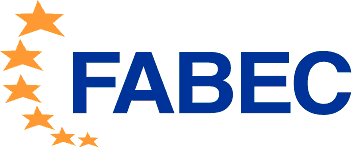Two FABEC ANSPs optimise arrivals at Frankfurt Airport

The arrival route for flights to Frankfurt Airport coming from the West via NIVNU – the transfer point close to the German/Belgian border – has been shortened by approximately eight nautical miles in the airspace of the Langen Area Control Centre. This shortcut is part of a series of measures initiated by the Continuous Descent Operations/Continuous Climb Operations/Horizontal Flight Efficiency Task Force. One of these measures – the Efficient Flight Profile Concept – was developed and implemented by Lufthansa, Karlsruhe UAC, Maastricht UAC, Langen ACC and Munich ACC at the beginning of the COVID-19 crisis to optimise horizontal and vertical profiles to and from Frankfurt and Munich airports for all airline operators.
The route shortening for flights to Frankfurt Airport results in concrete environmental savings. Based on an estimated 37,600 flights per year (pre COVID-19 traffic) on this shorter route, a total reduction of about 300,000 nautical miles (555,600 km) can be expected. This results in 5,200 tonnes less carbon dioxide (CO2) emissions per year, as well as an annual reduction of 18 tonnes of nitrogen oxides (NOx).
The design of standard arrival routes to airports accounts for various factors such as distances between ATS routes required for separation purposes and to enable best performance in high traffic demand conditions, restricting airspaces such as military areas, air traffic control sector design and others. As a result, arrival routes as well as departure routes often deviate from the ideal, shortest-distance trajectory. This is especially the case in the dense and congested airspace in the core area of Europe.
In a constant effort to improve flight efficiency while ensuring the highest safety standards, the DFS and MUAC have joined forces during times of low traffic to reduce complexity, increase capacity and improve environmental performance. This improvement was made possible in a very short time period thanks to the close cooperation between the Maastricht and Langen Air Traffic Control Centres.
There are plans to further optimise this arrival stream by implementing a RNAV1 STAR (standard arrival route for aircraft with high-performing navigation equipment offering an accuracy of 1 NM) with level constraints, which is intended to be even shorter and enable a continuous descent approach (CDA) to the transfer level to Frankfurt approach at RAMOB even in high traffic conditions.

.png)
.jpg)






Comments
There are no comments yet for this item
Join the discussion